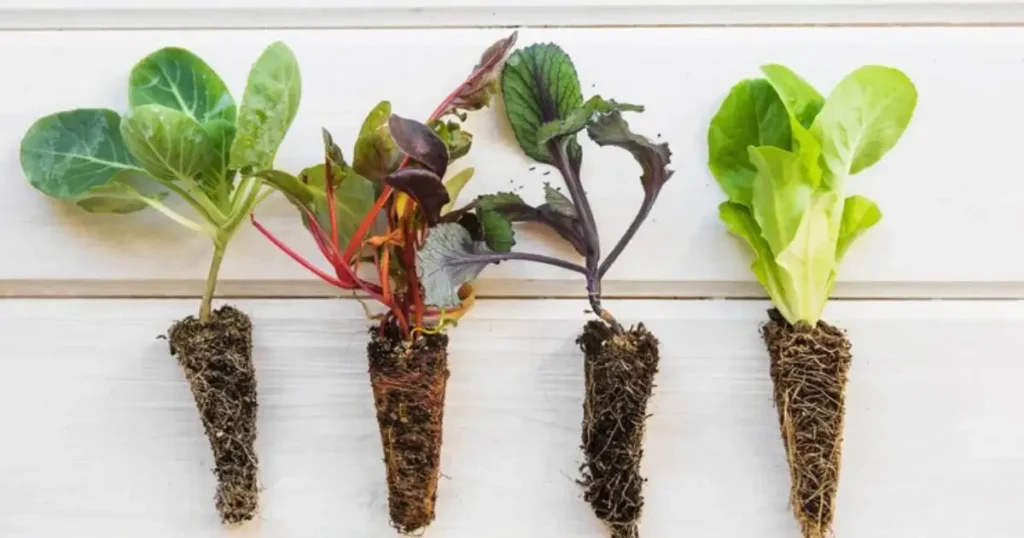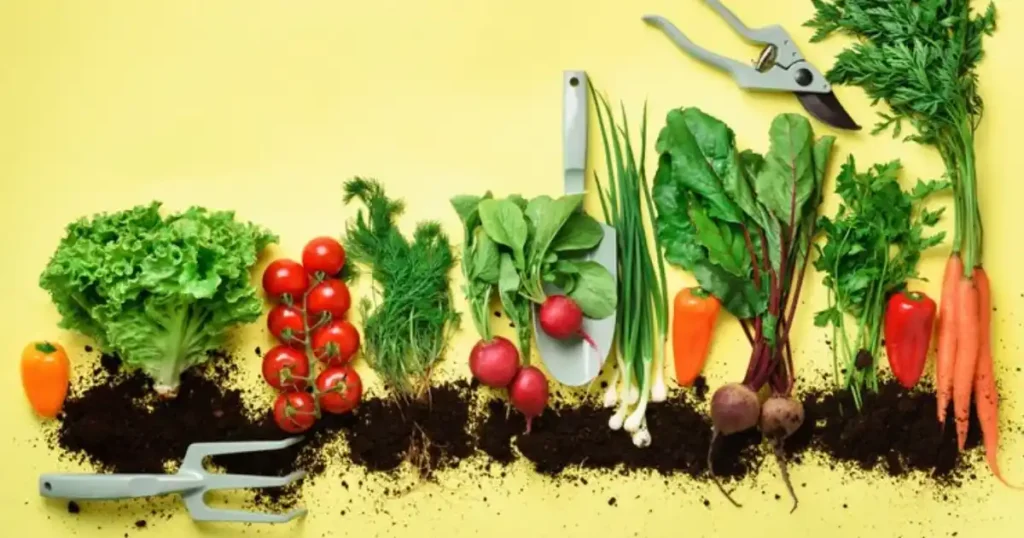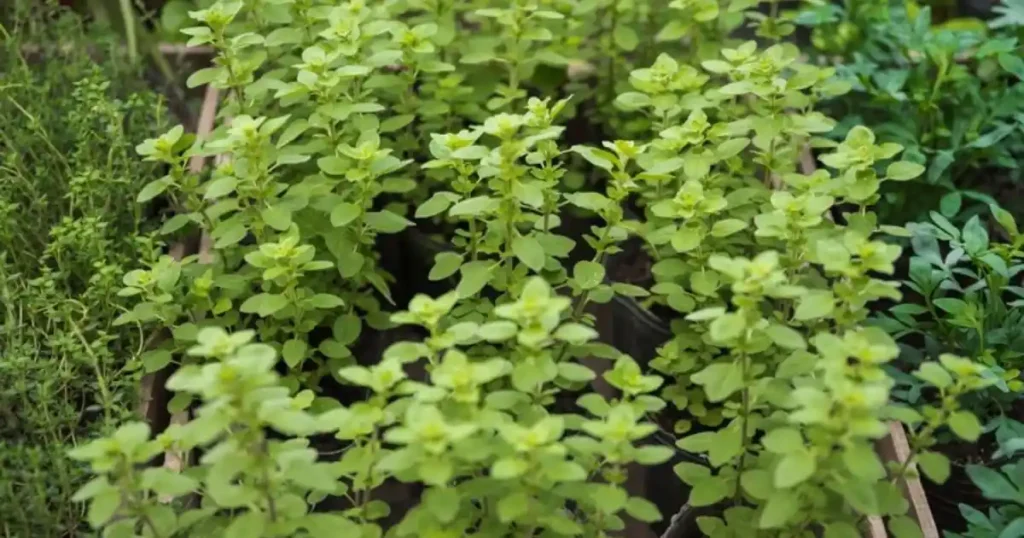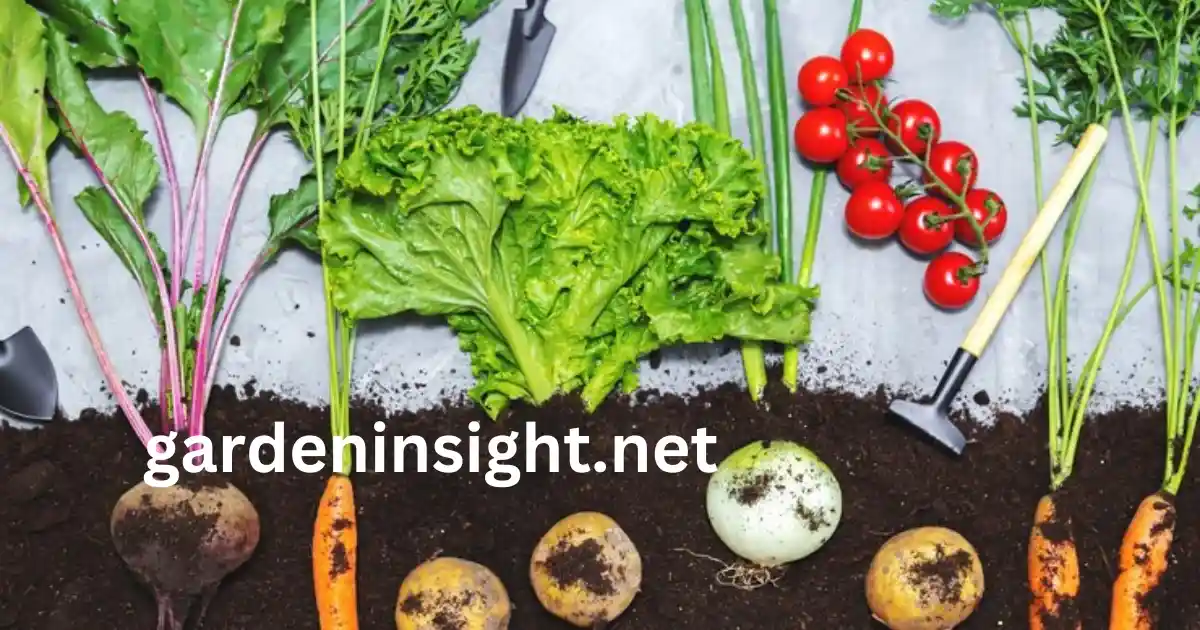Companion planting is the practice of growing different plants near each other for mutual benefit and concern behind “what to plant next to each other” is a reality.
It’s like creating a friendly neighborhood in your garden! Think of it like a puzzle: each plant has a role to play in supporting the others.
This guide will help you understand which plants grow well together, which to avoid pairing, and how to design your garden for success.
Benefits of Planting Friendly Neighbors in Garden

By carefully selecting plant pairings, you can:
- Improve growth: Some plants release nutrients that others need.
- Attract beneficial insects: Certain flowers bring in pollinators and helpful predators.
- Deter pests: Strong-smelling herbs can mask the scent of vulnerable vegetables, confusing common pests.
- Maximize space: Combine plants with different growing habits to use your garden area effectively.
What Vegetables Grow Well Together in a Garden?
Many vegetables make great neighbors! Here are a few popular pairings:
| Vegetable 1 | Companion Plant | Benefits |
|---|---|---|
| Tomatoes | Basil, Marigolds | Repels pests and enhances flavor |
| Carrots | Onions, Leeks | Deters carrot flies and onion flies |
| Cucumbers | Radishes, Dill | Repels cucumber beetles |
| Peppers | Spinach, Lettuce | Provides shade and retains soil moisture |
| Beans | Corn, Squash | Supports nitrogen fixation and shading |
Which Flowers are Good Companions for Vegetables?

Flowers aren’t just pretty faces in the garden. They can be powerful allies for your vegetables!
| Flower | Vegetable Companion | Benefits |
| Marigolds | Tomatoes, Peppers | Repels nematodes and pests |
| Nasturtiums | Squash, Beans | Attracts aphids away from vegetables |
| Sunflowers | Corn, Beans | Provides support and attracts pollinators |
| Calendula | Kale, Cabbage | Deters pests and improves soil quality |
| Zinnias | Cucumbers, Melons | Attracts beneficial pollinators |
Integrating flowers with vegetables also creates a biodiverse and visually appealing garden.
How Does Companion Planting Help a Garden?
Companion planting offers a range of benefits for your garden:
Natural Pest Control
Strong-smelling herbs like mint, rosemary, and lavender can confuse pests and keep them away from your vegetables.
Improved Soil Health
Legumes like beans and peas add nitrogen to the soil, a vital nutrient for many plants.
Increased Pollination
Flowers attract bees, butterflies, and other pollinators, ensuring your fruits and vegetables are properly fertilized.
Better Use of Space
Combine plants with different growth habits to maximize your garden space. For example, plant lettuce under taller crops like tomatoes.
What Plants Should Not Be Grown Side by Side?

Just like some people don’t get along, some plants are best kept apart.
| Plant | Should Not Be Planted With | Reason |
|---|---|---|
| Tomatoes | Potatoes | Both are prone to blight. |
| Carrots | Dill | Dill can stunt carrot growth. |
| Beans | Onions | Onions inhibit bean growth. |
| Cucumbers | Sage | Sage affects cucumber growth. |
| Corn | Tomatoes | Compete for nutrients and attract similar pests. |
Herbs bring added value to gardens by offering culinary benefits and natural pest control.
How to Plan a Companion Planting Layout?
Planning your garden layout for companion planting can be fun! Here are some tips:
- Research: Learn about the needs and benefits of different plants.
- Map it out: Draw a simple diagram of your garden beds.
- Consider sunlight: Group plants with similar sunlight requirements together.
- Think about growth habits: Combine tall plants with shorter ones to make the most of your space.
- Rotate crops: Change the location of your plants each year to prevent soil-borne diseases and maintain soil fertility.
Which Plants Attract Pollinators to the Garden?
Pollinators are essential for a productive garden. Here are some plants that attract these helpful creatures:
| Pollinator Plant | Features | Benefits |
|---|---|---|
| Lavender | Strong fragrance | Attracts bees and butterflies. |
| Borage | Bright blue flowers | Excellent nectar source for bees. |
| Cosmos | Long bloom period | Attracts a wide range of pollinators. |
| Echinacea | Cone-shaped flowers | Provides nectar for bees and butterflies. |
| Bee Balm | Vibrant colors | Loved by bees and hummingbirds. |
Include these plants to boost pollination and ensure bountiful harvests.
What are the Benefits of Planting Marigolds in a Vegetable Garden?
Marigolds are a must-have in any vegetable garden. Here’s why:
Pest Control
Marigolds emit a strong scent that repels nematodes, aphids, whiteflies, and other harmful pests.
Soil Health
Marigolds can help suppress soil-borne diseases.
Attracting Beneficial Insects
Marigolds attract ladybugs, lacewings, and other beneficial insects that prey on garden pests.
Beauty
Marigolds add a splash of vibrant color to your vegetable garden.
What Herbs Grow Best with Vegetables?

Herbs are not only delicious in your cooking but also valuable companions for your vegetables.
| Herb | Vegetable Companion | Benefits |
|---|---|---|
| Basil | Tomatoes, Peppers | Improves flavor and repels pests. |
| Dill | Cucumbers, Lettuce | Attracts beneficial insects. |
| Rosemary | Carrots, Beans | Deters carrot flies. |
| Thyme | Cabbage, Broccoli | Prevents cabbage worms. |
| Chives | Tomatoes, Carrots | Repels aphids. |
What to Plant Next to Each Other in Vegetable Garden: Quick Guide
| Vegetable | Good Companions | Bad Companions |
|---|---|---|
| Tomatoes | Basil, Onions, Garlic, Marigolds | Potatoes, Corn, Cabbage |
| Carrots | Onions, Leeks, Rosemary, Lettuce | Dill |
| Lettuce | Radishes, Carrots, Spinach, Marigolds | |
| Beans | Corn, Potatoes, Marigolds | Onions, Garlic |
| Peppers | Basil, Onions, Tomatoes, Marigolds | Beans |
| Cucumbers | Dill, Nasturtiums, Marigolds | Potatoes, Sage |
What Not to Plant Next to Each Other in a Garden
| Plant | Incompatible Neighbor | Reason |
|---|---|---|
| Potatoes | Tomatoes | Shared diseases |
| Onions | Beans | Growth inhibition |
| Corn | Tomatoes | Shared pests |
| Cabbage | Strawberries | Growth inhibition |
| Broccoli | Tomatoes | Nutrient competition |
Conclusion
Companion planting is a powerful way to enhance your garden\u2019s health and productivity. By understanding what to plant next to each other in a garden, you can create a thriving ecosystem that benefits your vegetables, herbs, and flowers.
Thoughtful planning, including the integration of pest-repelling plants and pollinator-friendly flowers, will ensure your garden remains vibrant and fruitful.
Start designing your companion planting layout today to enjoy a lush, productive space for years to come.
FAQs: What to Plant Next to Each Other in a Garden
Some of the frequently inquired questions about what to plant next to each in other in garden are as follow:
Can I plant mint anywhere in my garden?
Mint can be invasive. It’s best to plant it in containers to prevent it from taking over your garden.
What are some good companion plants for roses?
Garlic, chives, and lavender are good companions for roses. They help deter pests and diseases.
Does companion planting really work?
Yes, companion planting has been practiced for centuries. While not every pairing is scientifically proven, many gardeners have experienced the benefits firsthand.
How can I learn more about companion planting?
There are many resources available, including books, websites, and local gardening clubs.
Where can I find a companion planting chart?
Many gardening websites and seed catalogs offer companion planting charts for easy reference.
